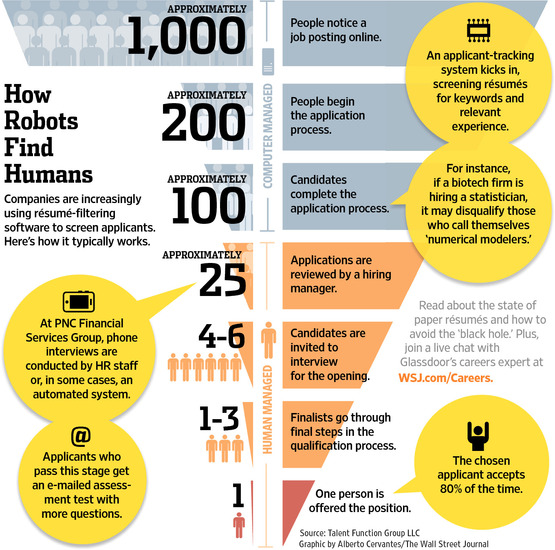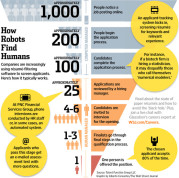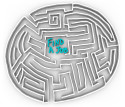ATS Anxiety: Avoiding the Black Hole When Job Hunting
Remember the good old days when you had one resume, wrote a custom cover letter, mailed it, and got back a response from a live person? It seems those days are nearly gone, replaced by a system that can seem like a black hole.

Application Tracking Software is designed to aid the employer in sorting through growing numbers of applicants more efficiently.
The National Resume Writers Association recently offered a teleseminar for members on the latest developments in Applicant Tracking Software (ATS) systems. Used by the vast majority of employers to scan and organize job applications, ATS systems have been grown in use over the past decade.
The presenter interviewed representatives from the top 10 ATS system manufacturers, both front-end users and back-end developers. Decades-old standards of resume writing and design have been radically altered by the new artificial-intelligence-equipped ATS systems.
In a nutshell:
- Stop worrying what the resume looks like to the human eye. The new systems do NOT forward the applicant’s dutifully uploaded, beautiful-looking .PDF file on to the hiring managers. Hiring managers only get to see the text data after it’s been parsed and copied into the ATS system, which auto-highlights the keywords identified. For the newer ATS systems, uploading .DOC or .DOCX file is fine.
- PDFs are fine so long as they are text based. In other words, it is ok to create and use a PDF from your software, but do not scan a printed resume using a copy machine, fax or scanner, to generate the PDF, because that creates a non-text graphic image. ATS systems are NOT optical character readers. They can’t convert a graphic into a text file. They parse text information into their systems.
- Focus instead on optimizing the resume for the cold dead eye of the ATS system. They are Borg. Resistance is futile.
- Forget using any distinctive characters such as fancy bullets, rules, or font-based graphic elements. These will be read incorrectly and could even show up as spelling errors.
- Ditch any columns and tables. These will also return errors as the ATS cannot at this time properly parse columns or tables of text.
- Forget judiciously trying to fit the resume into one or two pages. More important is equal spacing between sections, with proper headings. If that bumps the resume to 3 or 4 pages, no worries. The ATS system looks at the spacing and headings to parse the text into categories. It is unclear whether the spacing is best via hard character returns, soft character returns, space-after or space-before style settings, or whether it matters at all. It may simply measure the space between and look for consistency. If anyone knows the answer, please add that in the comments.
- Redundancy is now OK–even desireable. The new AI-ATS systems employ a Google-search-engine-type ranking system to assess pools of applicant resumes. This renders invalid the decades-old standard of brevity and non-redundancy. Keywords are king, and the more times they’re used and the higher up in the resume, the higher the rank. In other words, the AI-ATS weights the rank higher for keywords found in the top 1/3 of the first page; then the rest of the first page is weighted to rank higher than the second page, which is considered older experience, and so on.
- Avoid random keyword loading. While keywords appearing multiple times increases your ranking, they must be written in a proper context. List the key words in the Skill Summary or Expertise area, and then describe achievements using those same keywords in the proper context below the job title.
- Expect more changes to the system. ATS software is cloud-based, meaning it will be continually updated and changed. Hiring managers can also “tweak” the system locally, after a job is posted and they have a pool of candidate resumes. They can decide to reduce the number of key words, change key words, even add new key words, to re-sort, reduce, or revise the applicant pool. Bottom line: the job hunt and application process has become even more complex and risky.
All said, job seekers must bear in mind that the vast majority of all jobs are still filled OUTSIDE of job postings. Approximately 80% of jobs never get publicly listed, but are filled through networking, word of mouth, internal hires/transfers, etc. It is still a who-you-know world. Smart job hunters will be prepared for and focus their job-hunt activities on LinkedIn research and networking, face-to-face real-world meetings, and will still need a beautifully-designed, eye-catching resume for these situation. There is still value to a well-designed, concise resume that can be directly emailed or delivered in person.
Changing careers? This new Google-like ranking system makes it more challenging without clever writing that incorporates the key words into your past job descriptions that had nothing to do with those key words. Meanwhile, those with the most experience will rise higher in rank. Thus it is more crucial than ever before to pursue means other than cattle-call response to job postings. The best way to distinguish yourself remains what it always has been: pound the pavement and pump the flesh, while making sure your personal brand on LinkedIn and elsewhere online is strong. Job seekers need to be smart, proactive job hunters, seeking out the employers they desire, and promoting themselves and their transferable skills.
Job seekers today are wise to have in their hip pocket a “show” resume for face-to-face networking and direct emailing — an activity that should comprise 80% of their job hunting activities. For upload into systems they need multiple, carefully key-word loaded, distinct, ATS-optimized resumes, each one custom-worded for every job application.
Yes, the good ol’ days are long gone. And at the same time, these are the new good ol’ days.









Recent Comments